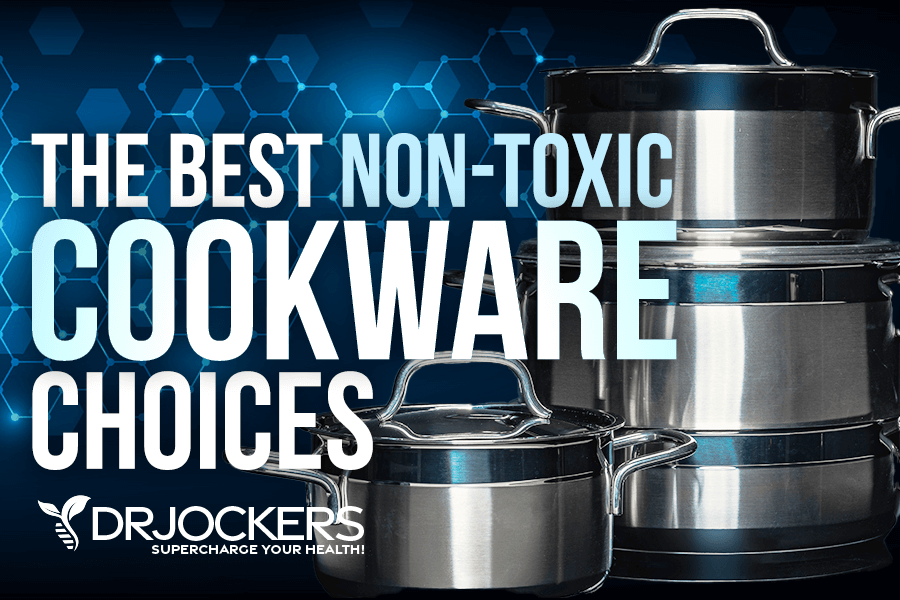 Best Non-Toxic Cookware Choices
Best Non-Toxic Cookware Choices
Non-toxic cookware is an important topic to all of us. The food you put on your table matters. You know that already. But did you know that your cookware matters just as much?
Open your kitchen cabinet and look at your current cookware. It may be toxic. Starting in the early 1960s, non-stick cookware has been advertised as the best in the cooking world.
According to a 1964 Mirro Aluminum Company ad, Teflon was a miracle we all needed (1). But this is far from the case. Teflon and other non-stick cookware can be toxic and cause chronic inflammation and chronic health issues. Instead, you should choose better, non-toxic cookware to keep your food and health safe.
In this article, I will discuss the problems with non-stick cookware. I will go over the legal battle against PFOA in non-stick cookware. I will talk about where else Teflon is used. Finally, I will talk about the importance of non-toxic cookware and I will share my review of my favorite cookware, Chef’s Foundry.
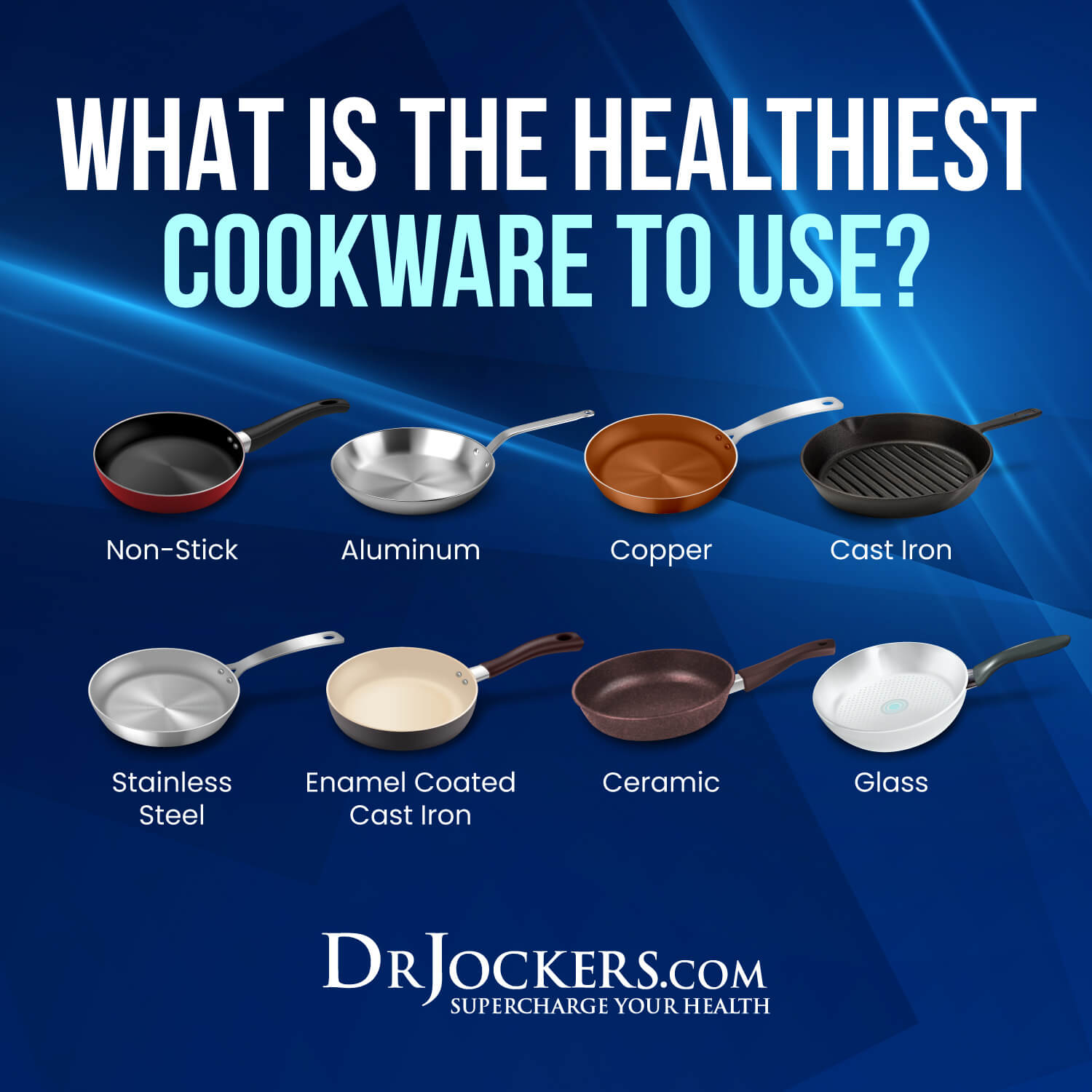
The Problem with Non-Stick Cookware
The biggest problem with non-stick cookware is the chemicals in them, namely polytetrafluoroethylene (PTFE) and perfluorooctanoic acid (PFOA). PTFE is a nonflammable synthetic resin made by the polymerization of tetrafluoroethylene. It is strong, tough, non-reactive, insulating, and waxy in texture.
It is most commonly known as Teflon®. It is commonly used in non-stick cookware. PFA is another chemical used in non-stick cookware. This perfluorochemical is a byproduct of making fluoropolymers and is used for creating fluoropolymer coatings and products that are resistant to heat, oil, grease, stains, and water.
Being resistant to all these things may sound great. Unfortunately, both of these chemicals in popular non-stick cookware have been linked to all kinds of environmental and health issues.
PFOAs can be extremely dangerous to your health. According to a 2007 paper published in Environmental Health Perspectives, about 95 percent of people in the US have some level of PFOAs in their blood (2). A 2010 study published in Environmental Health Perspectives has found that PFOAs may lead to toxic health effects on the immune system, endocrine system, and liver (3).
According to the findings, PFOA may also increase the risk of cancer and neonatal death. According to a 2006 research published in Nihon Kokyyuki Gakkai Zasshi, Teflon coating in non-stick cookware may increase the risk of lung edema when fumes are inhaled (4).
According to a 2007 review published in Toxicological Sciences, PFOAs may negatively impact your thyroid hormones and hormonal health (5). They found that these toxins may also increase your risk of cancer, including breast, pancreatic, liver, kidney, bladder, and testicular cancer.

The Dangers of Teflon
It’s scary to think that most Americans have some level of these chemicals in their bloodstream due to the use of non-toxic cookware and other products that use these chemicals, including food packages, nail polish removals, personal care products, cleaning products, microwave popcorn non-stick food wraps, pizza boxes, paint, repellant agents for soil, water, and grease, no-iron and wrinkle-free clothing, and eyeglasses. According to a 2007 paper published in Environmental Health Perspectives, about 95 percent of people in the US have some level of PFOAs in their blood (6).
The original company that made non-stick cookware, DuPont, claimed that their products didn’t create toxins through normal use and were completely safe for human health. However, they never mentioned the polymer fume fever cases in their factories. They also missed to speak about hemorrhages in exposed birds in the areas.
Though they claimed their non-stick coating didn’t start to decompose until well above normal cooking temperatures at 660 F (348 C), new findings suggest that non-stick cookware may reach 736 F (391 C) within just 3 minutes and 20 seconds used on a regular electric stovetop. Moreover, it seems like temperatures can continue to rise. Other tests also showed that just within just 5 minutes, Teflon pans may reach 721 F (382 C) (7).

Chemicals in Non-Stick Cookware
What does this mean? You’ve guessed it right. Toxic chemicals can start to release within just a few minutes of cooking. So if you’ve ever used non-stick cookware, you’ve been likely exposed to these chemicals too.
According to the Environmental Working Group (EWG), there are several issues with Teflon and chemicals in non-stick cookware (8, 9):
- Long-term exposure: Long-term chronic exposure to Teflon can be a major problem. The fumes from overheated Teflon can pollute your air. When you breathe this in, you can expose yourself to the risk of flu-like symptoms called Teflon flu. Though this is not well studied, it may have long-term health consequences.
- Perfluorinated chemical family (PFCs): PFCs are found in most households in the US based on federal public health official testing. This may increase the risk of increased cholesterol, liver inflammation, poor immune health, poor thyroid hormone levels, abnormal thyroid function, and smaller birth weight and size in newborns.
- Environmental risk: Telfon is also a problem for the environment. Manufacturing PFCs and products with them can pause risks for our environment and wildlife. They may lead to bioaccumulation and toxicity. Simply using these products in your home leads to air pollution and can affect the environment, for example, your indoor plants or nature in the area with outdoor cooking.
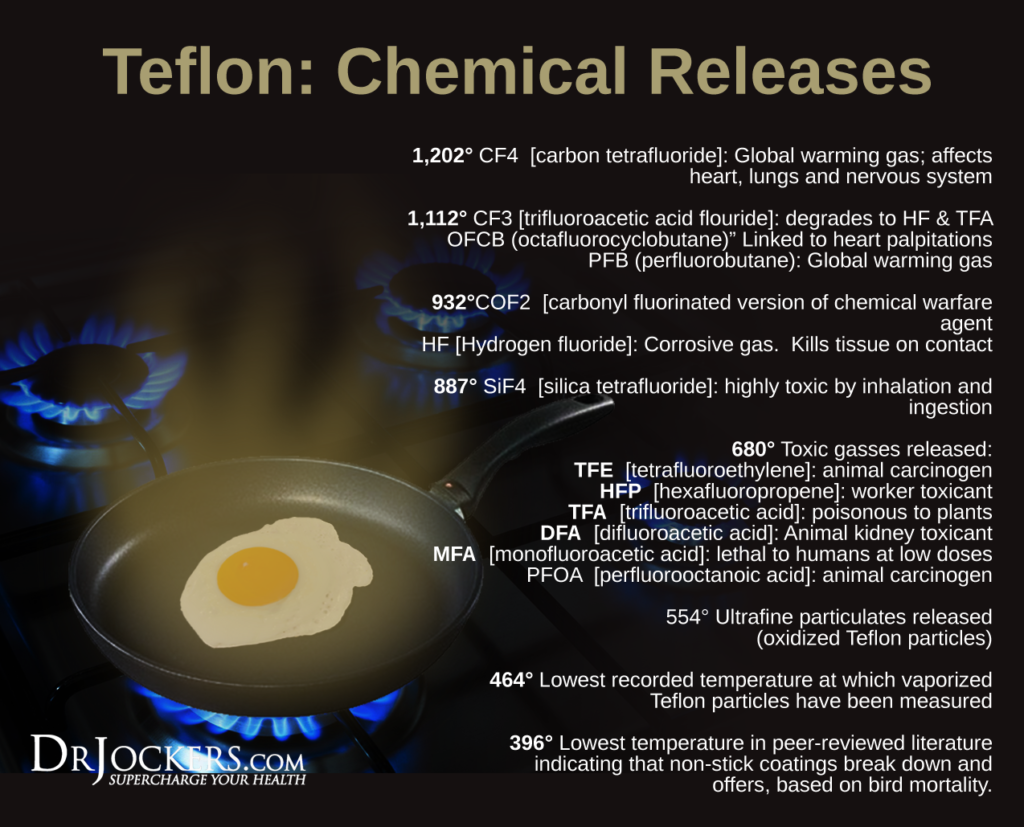
The Legal Battle Against PFOA in Toxic Cookware
Though it didn’t happen right away, once the US Environmental Protection Agency (EPA) recognized the dangers of Teflon and non-stick cookware, it warned the public about the dangers of PFOA. They also accused DuPont, the company originally creating non-stick technology, of not disclosing critical health information to the public.
There was clear research evidence of the dangers of fluorocarbon even back in the 1960s. As I mentioned earlier, there were health issues in the factories and hemorrhages in exposed birds in the area.
Yet, they didn’t disclose this information. Even worse, it took about 40 years and billions of dollars in revenue from selling Teflon products until they finally got called out for it. In 2005, DuPont reached a settlement. They were only fined $16.5 million, which is nothing considering the revenue they made with their products by spreading false information and hiding facts about serious health risks (10, 11).
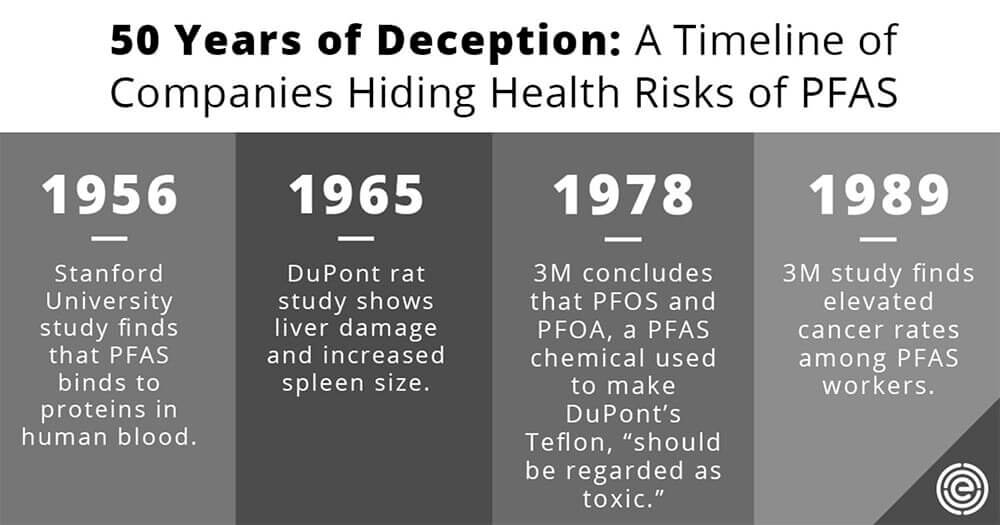
The Environmental Working Group (EWG) and other watchdog organizations were not happy about this settlement. According to Ken Cook, the president of EWG, “What’s the appropriate fine for a $25 billion company that for decades hid vital health information about a toxic chemical that now contaminates every man, woman, and child in the United States?
What’s the proper dollar penalty for a pollutant that will never break down and now finds its way into polar bears in the Arctic and human babies in their mother’s wombs? We’re pretty sure it’s not $16 million, even if that is a record amount under a federal law that everyone acknowledges is extremely weak.” (12). I tend to agree. $16 million doesn’t make up for all the lies and potential health effects Teflon products have potentially caused — even after the settlement.
This settlement happened in 2005. Yet, DuPont was able to sell its non-stick cookware products with PFOA until October 2013 (13). That’s something that makes you think. Even though years of research showed health issues related to non-stick products, and there were lawsuits and criminal investigations led by the Department of Justice against DuPont for not reporting health issues related to Teflon among their employees, they were able to keep their products on the market and make a profit for a long time.
Today, Teflon is not made with PFOAs directly. This means that DuPont is not receiving as much heat as before, and public health authorities generally agreed these products are safe. This may not be the case. According to the book What Einstein Told His Cook: Kitchen Science Explained by Robert L. Wolke, a University of Pittsburgh chemistry professor, these products should be safe if they are not overheated (14).
The US Food and Drug Administration (FDA) also believes that these products are safe and risks are considered negligible (15). I don’t know about you, but I believe that no risks should be negligible. We need to think critically about our current non-stick cookware, too, and replace them with safer alternatives.
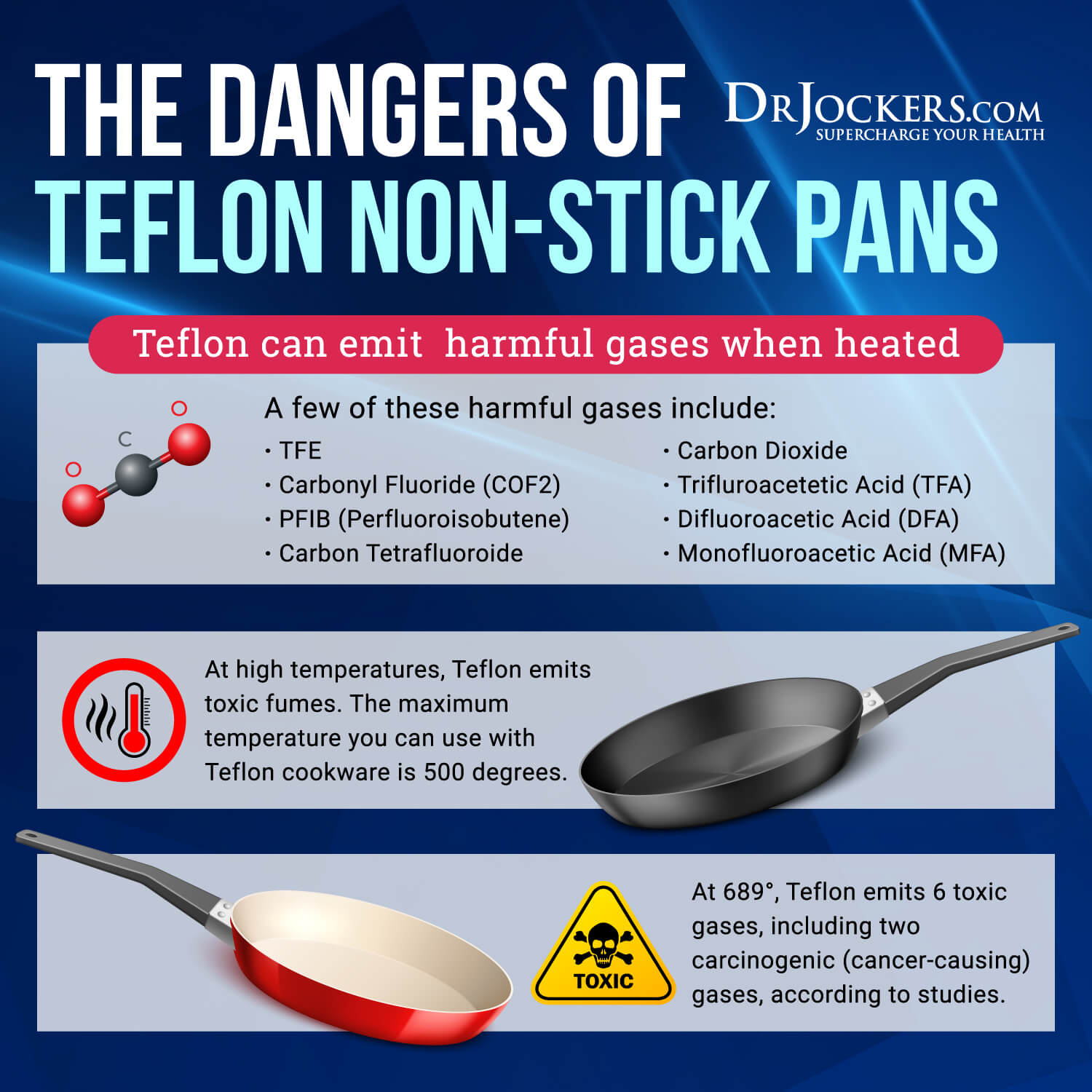
The “New Teflon” — Current Toxic Cookware
Tefon can be found in the bloodstream of just about every person in the US and in the bloodstream of people in the world who sell non-stick cookware products with Teflon (2). You cannot escape Telfon — it’s literally everywhere. They claim that non-stick coating makes life easier. Their toxic non-stick coating is not only added not only to toxic cookware but also to other products on the market, including:
- Apparel
- Accessories
- Contract, technical, iron-free, and wrinkle-free fabric
- Cleaning and other home products
- Gardening products
- Paint products and related accessories
- Recreational products
- Personal care and beauty products
- Transportation products
- Food packaging, including wraps and boxes
- Eyeglasses
But they are not using PFOA in their non-stick cookware. Instead, they are using PTFE as a primary ingredient for their non-stick cookware and other products. That doesn’t sound better either since PFOA is used to manufacture PTFE (16). “New Teflon” may be just as dangerous as the old PFOA version.
Let’s think about this for a moment. There was a lawsuit and a $16.5 million settlement. Did it accomplish anything? Not really. It’s all a smokescreen at best. PTFE and fluorotelomer break down into PFOA and other dangerous chemicals that you should avoid.
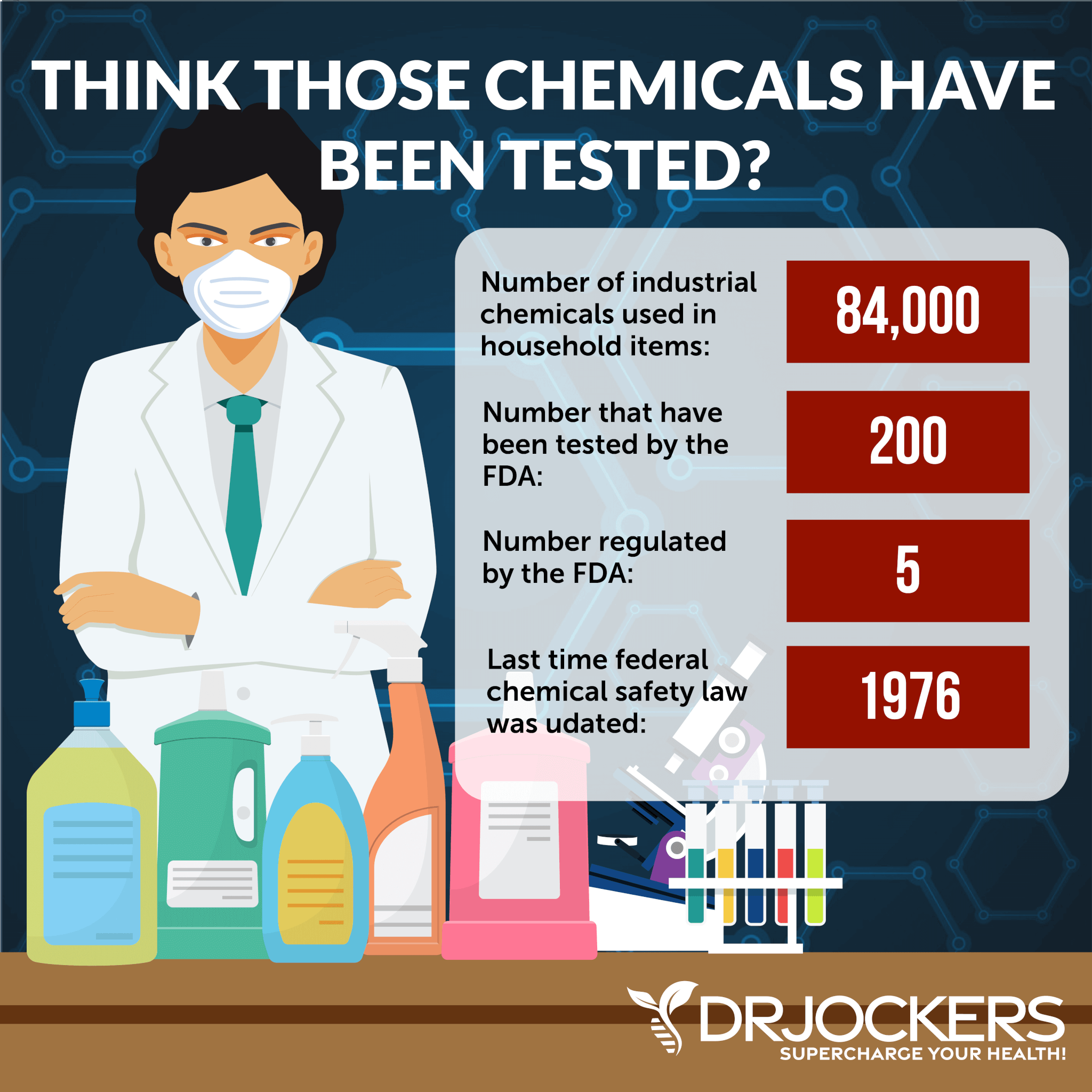
Other Harmful Toxins in Cookware
So what if you are not using PFOA and PTFE-filled non-stick technology? You are also not safe. There are other chemicals in cookware that may harm your health, including aluminum and copper.
Aluminum
Aluminum is basically everywhere. It’s in your cans, pans, tin foils, body care products, medication, powerlines, electronics, airplane parts, and window frames. While it’s impossible to completely avoid exposure, you can reduce your exposure. Avoiding aluminum cookware is one way.
A 2021 study published in the Journal of Alzheimer’s Disease Reports has found that exposure to high amounts of aluminum may increase the risk of neuropathology in Alzheimer’s disease (17). A 2012 study published in the Journal of the American Society of Nephrology has found that aluminum may lead to an increased risk of kidney stones and kidney injury (18).
According to a 2009 study published in Food and Chemical Toxicology, boiling water in the pot or pan before cooking may help to decrease the toxin load by 60 percent, which may be a good option if you must use aluminum cookware (19).
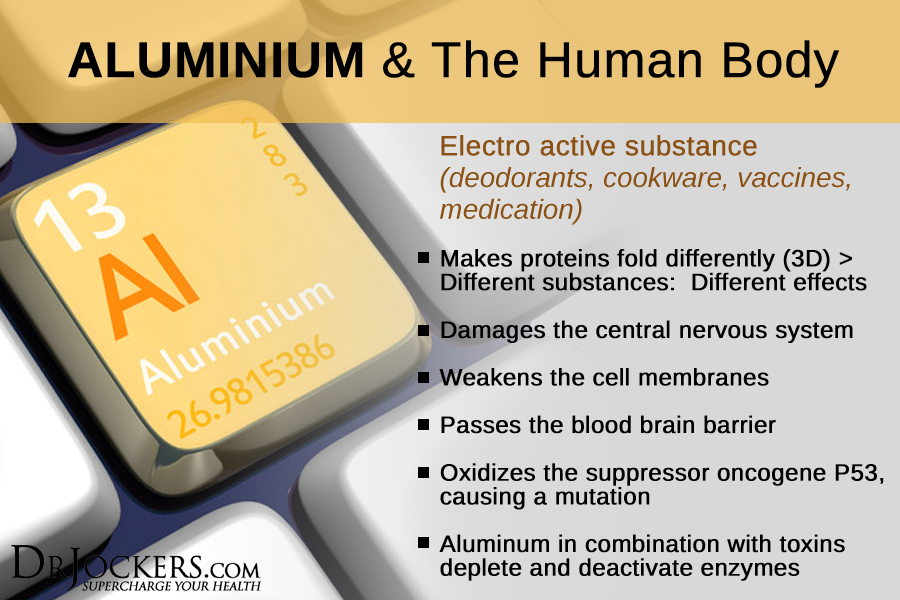
Copper
Copper is another common metal and potential toxin. It is found in our air, water, and environment. Our corrosive piper may increase copper levels in your tap water. Though copper is an important element for your health, high levels can be problematic and lead to negative health effects.
A 2003 study published in The American Journal of Clinical Nutrition has found that copper may lead to an increased risk of diarrhea, nausea, and other digestive issues (20). Copper toxicity may also cause muscle aches and pains, headaches and migraines, fever, and other issues (21, 22). Though copper cookware offers evenly controlled temperatures during baking and cooking, because of the health risks, you may want to choose other options.
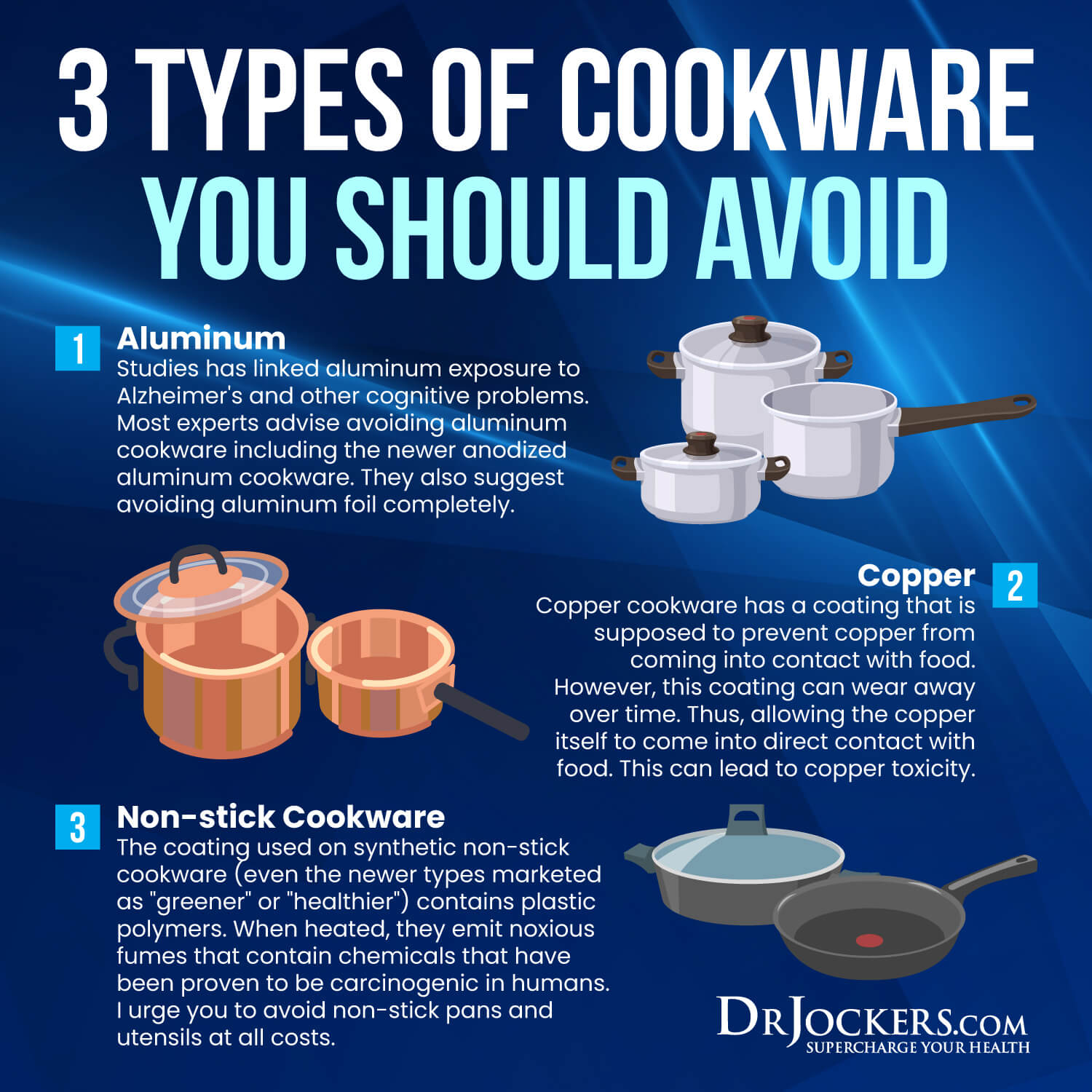
What About Stainless Steel?
What about stainless steel? Stainless steel is an alternative to Teflon and toxin-filled cooking. Though it’s a great material, there are some concerns.
First of all, stainless steel is not a great conductor of heat compared to some other materials. To fix this problem, much stainless steel cookware actually includes some aluminum or copper coating at the bottom to improve heat transfer. This is obviously a health concern, especially if there is damage to the cooking surface causing heavy metal contamination.
Stainless steel cookware may also have some levels of chromium, nickel, and iron that may escape when cooking your food at higher temperatures (23, 24). Cooking with vinegar, citrus, tomatoes, or other acidic foods in stainless steel cookware may also lead to an elevated risk of metallic contamination while cooking.
If you are cooking with stainless steel cookware, it’s important that you are using one without copper coating. When it comes to acidic food, such as citrus, tomato, and vinegar, choose glass or other cookware instead of stainless steel options. If you are allergic to nickel or other metals, avoid stainless steel cookware. Overall, there are much better and safer options for you.
So what do I recommend for safe, non-toxic cookware? Let’s get into it!
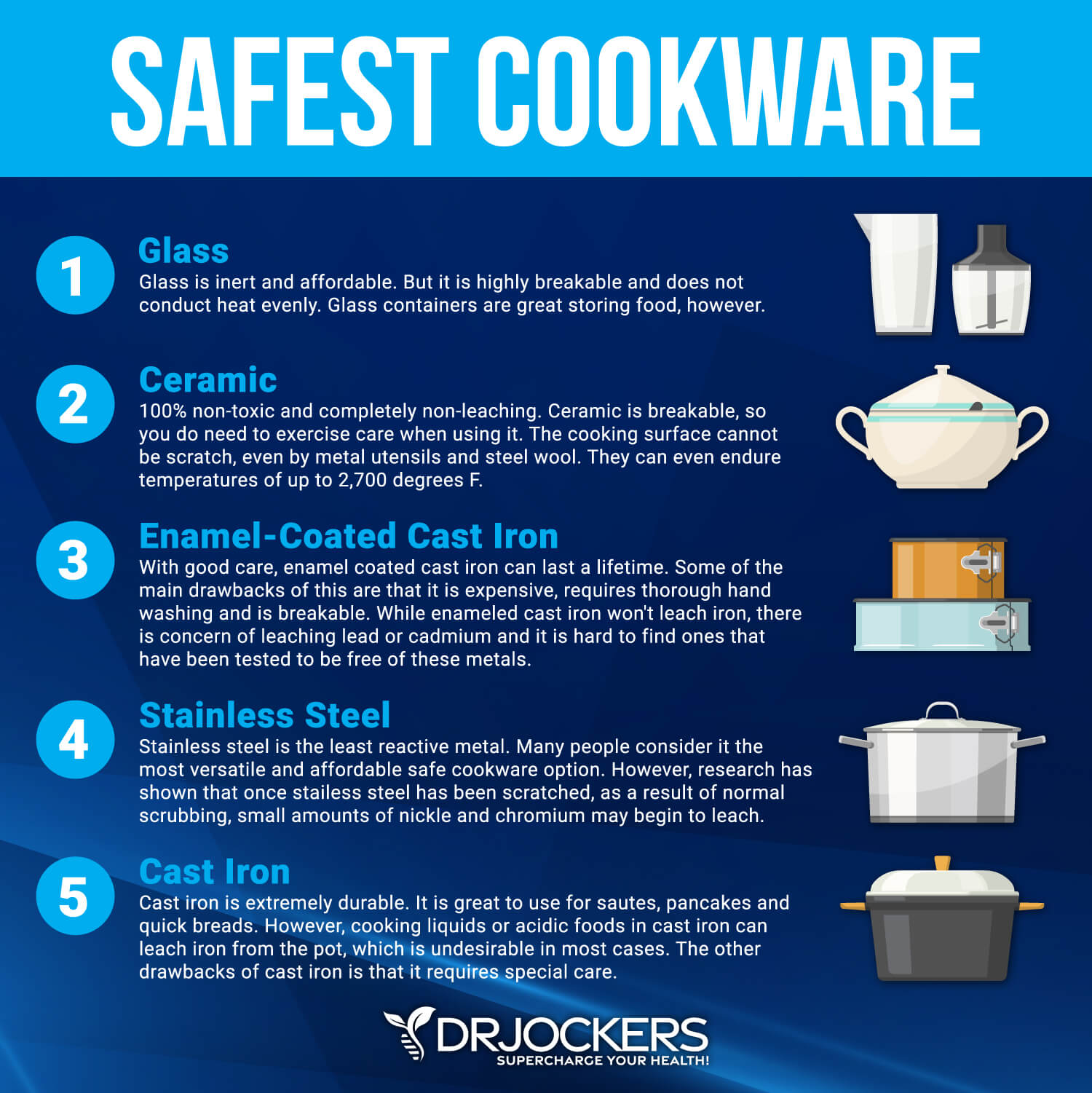
My Non-Toxic Cookware Recommendations
I have good news! You don’t have to expose your body to Teflon and other unhealthy toxic cookware anymore! There are some much safer non-toxic cookware alternatives that don’t harm your body.
Some options include:
Cast Iron Cookware
Cast iron is a popular type of cookware. It is generally a safe option for most individuals unless they are dealing with high iron levels. Cast iron cookware, however, may react to cooking acidic foods. It can lead to discoloration and a metallic flavor as well. It may not be a good option for acidic foods, such as paste sauce.
Cast iron also adds iron to the foods that are cooked on it. This means it would be very beneficial for those with low-iron or iron deficiency anemia. However, there are many individuals, especially men and post-menopausal women who have high iron levels and this has been linked to elevated oxidative stress and inflammation.
Enamel cast iron, however, does not leach iron and may help to reduce metallic taste and discoloration and may be appropriate for acidic foods too. There is concern about enameled cast iron leaching lead or cadmium and it is hard to find ones that have been tested to be free of these metals. According to lead safe mama’s website, the one that tested out the best is the Lodge Cast Iron Dutch Oven.

Glass Cookware
Glass cookware is another great and safe option for your kitchen. It doesn’t cause cooking contamination and discoloration. It doesn’t absorb food odors and flavor causing any taste issues. It is durable and great for storing leftovers too.
There is one potential risk: some glassware on the market is leaded, so you need to really check that you are choosing lead-free glass cookware if that’s your choice of cookware. Here is a good option for lead-free glass cookware.

Ceramic Cookware
Ceramic cookware is my favorite option! Why? It helps to retain high temperatures without toxic fumes, the use of metals, and contamination issues. There are no risks or issues with discoloration, odors, and funky taste. It’s simple to use. It’s easy to clean.
But not all ceramic cookware is the same. Some ceramic cookware is made with poor quality, non-stick coatings that leach out chemicals. You want to avoid that. Always do your research and check for safety guidelines. Better yet, follow my recommendation and choose my favorite cookware, Chef’s Foundry. for high-quality, safe ceramic cookware without any toxic elements and health risks.
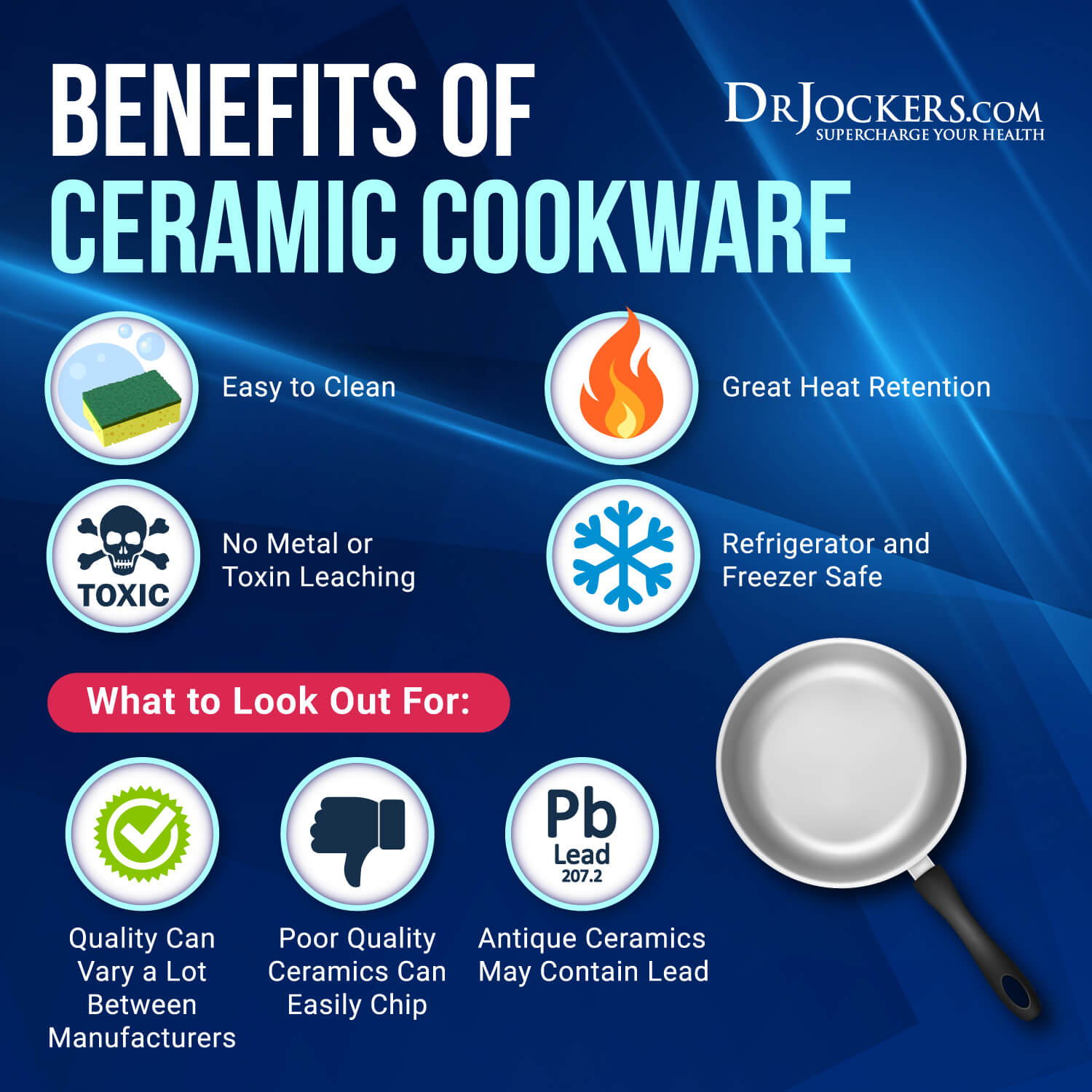
Chef’s Foundry Ceramic Pans
So, why do I love Chef’s Foundry?
- It’s made with an inert material that is non-toxic and safe for your health.
- It is non-stick yet safe for your health, making it perfect for eggs, cheesy dishes, meat, casseroles, and any stickier foods.
- They are using an exclusive multi-step process to heat and seal their ceramic. This helps to avoid any discoloration, cracking, warping, or other issues.
- It’s super easy to use! You can use them in your oven, thanks to the handles.
- The handles make storage easier too!
- They are easy to clean.
- They are safe for your health!
Ceramics are naturally organic and durable. You don’t have to worry about the change in taste from acidic or other foods. There is no discoloration. Thanks to the inorganic and 100 percent natural materials, ceramic cookware is non-toxic without any dangers to your health. You don’t have to worry about chemicals and metals contaminating your food or air or harming your health.
You can use them safely in both high and freezing temperatures. You can put them under your broiler, in your oven, or in your freezer without issues. It works for storage too. You can use it for just about any dish you want. It’s gas-friendly, electric-friendly, and induction-friendly — it basically works in any kitchen.
Chef’s Foundry is safe and the best non-toxic cookware that I have found. If you want high-quality, non-toxic cookware that is going to last, then we highly recommend these.
I promise you will love it too. It’s affordable and risk-free due to their money-back guarantee. Though I’m sure you won’t have to ask for your money back, it really is the best cookware out there.
Final Thoughts on Non-Toxic Cookware
The food you cook matters. What you cook your food matters just as much. Non-stick cookware may seem handy, but it’s full of dangerous chemicals that may harm your health.
It’s important that you protect your body and choose safe, non-toxic cookware. I recommend that you try Chef’s Foundry ceramic cookware to improve the quality of your food and support your health.
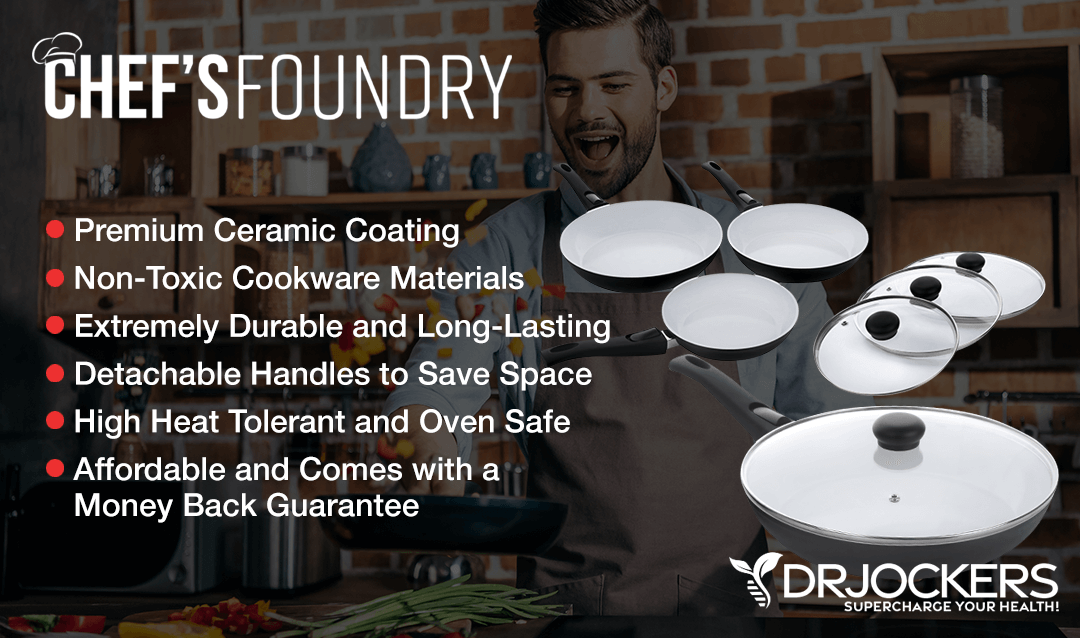




Dr. Jockers,
No long ago I had to return the Chef’s Foundry cooking set. It came with an awful chemical odor. I had to put the set outside for a week and it was still releasing those VOCs. It came mainly from the sets of spoons.
By any chance, did they provide any certification of assurance of non toxicity? so you can recommend this brand?
I would ask the same for the Non Lead glass Vision Brand.
Do they have any pots for making soups, etc.? I can’t find anything on the link you give here or when I Google “Chef’s Foundry.” Also, I have heard some bad things about the spoon set they provide….very toxic. Are there any toxicity-test results that we can see? I could not find them, which seems odd. Thank you, Dr. Jockers, for all that you do to educate us.
I was interested at one time in the set of pans. They were going to add in all the plastic looking utensils too, but I couldn’t find what the utensils were made of. I looked and searched for them to say how safe they were but found nothing. It made me think why wouldn’t they mention anything about the quality and how safe the utensils were. I figured they were possibly toxic. So, I changed my mind about the pans. Maybe they’re not as good as they say they are.
I don’t believe the chef pantry pans are as good as they say they are. I heard titanium is non-toxic.
I called the distributor of Vision cookware and they do not have an information regarding Lead free certification. I asked for the manufactured phone number, but the number was not good. I think a good way to find out is to visit Lead free mama web site.
I don’t like the ceramic cast iron pans because they are very heavy and I am old and about 5′ tall. I rely on two carbon steel pans that I use on the stove almost exclusively. They’re not as heavy as cast iron and I thought they were as well made, but you don’t mention carbon steel in your article. In the oven, I use ceramic baking dishes, but not with cast iiron.